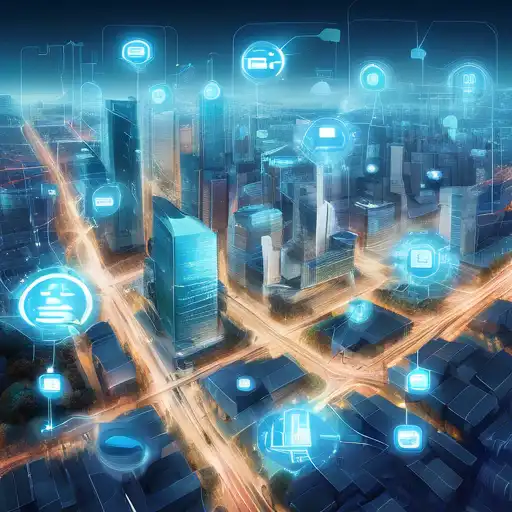Introduction to IoT in Smart Cities
The Internet of Things (IoT) is revolutionizing the way urban areas operate, making cities smarter, more efficient, and more sustainable. By connecting devices, vehicles, and infrastructure to the internet, IoT enables real-time data collection and analysis, leading to improved decision-making and quality of life for residents.
Key Benefits of IoT in Smart Cities
IoT technology offers numerous advantages for smart cities, including:
- Enhanced Public Safety: IoT devices like surveillance cameras and sensors can monitor public spaces, reducing crime and improving emergency response times.
- Improved Traffic Management: Smart traffic lights and sensors can optimize traffic flow, reducing congestion and pollution.
- Energy Efficiency: Smart grids and meters help in managing energy consumption more effectively, leading to significant savings and reduced environmental impact.
- Waste Management: IoT-enabled waste bins can signal when they are full, optimizing collection routes and frequencies.
Challenges and Solutions
Despite its benefits, implementing IoT in smart cities comes with challenges such as data security and privacy concerns. However, advancements in encryption and blockchain technology are providing solutions to these issues, ensuring that smart cities can leverage IoT safely and effectively.
Future Prospects
The future of IoT in smart cities is bright, with ongoing innovations promising even greater efficiencies and sustainability. From autonomous vehicles to AI-powered urban planning tools, the potential for IoT to transform urban living is limitless.
For more insights into how technology is shaping our cities, check out our article on Digital Transformation in Urban Planning.
Conclusion
IoT is at the heart of the smart city revolution, offering solutions to some of the most pressing urban challenges. As technology continues to evolve, the role of IoT in making cities more livable, sustainable, and efficient will only grow. The journey towards fully realized smart cities is complex, but with IoT, the possibilities are endless.
